Mitochondria-targeted therapeutics, MitoQ and BGP-15, reverse aging-associated meiotic spindle defects in mouse and human oocytes
- PMID: 33367783
- PMCID: PMC7891816
- DOI: 10.1093/humrep/deaa300
Mitochondria-targeted therapeutics, MitoQ and BGP-15, reverse aging-associated meiotic spindle defects in mouse and human oocytes
Abstract
Study question: Do mitochondria-targeted therapies reverse ageing- and oxidative stress-induced spindle defects in oocytes from mice and humans?
Summary answer: Exposure to MitoQ or BGP-15 during IVM protected against spindle and chromosomal defects in mouse oocytes exposed to oxidative stress or derived from reproductively aged mice whilst MitoQ promoted nuclear maturation and protected against chromosomal misalignments in human oocytes.
What is known already: Spindle and chromosomal abnormalities in oocytes are more prevalent with maternal aging, increasing the risk of aneuploidy, miscarriage and genetic disorders such as Down's syndrome. The origin of compromised oocyte function may be founded in mitochondrial dysfunction and increased reactive oxygen species (ROS).
Study design, size, duration: Oocytes from young and old mice were treated with MitoQ and/or BGP-15 during IVM. To directly induce mitochondrial dysfunction, oocytes were treated with H2O2, and then treated the MitoQ and/or BGP-15. Immature human oocytes were cultured with or without MitoQ. Each experiment was repeated at least three times, and data were analyzed by unpaired-sample t-test or chi-square test.
Participants/materials, setting, methods: Immature germinal vesicle (GV) stage oocytes from 1-, 12- and 18-month-old mice were obtained from preovulatory ovarian follicles. Oocytes were treated with MitoQ and/or BGP-15 during IVM. GV-stage human oocytes were cultured with or without MitoQ. Mitochondrial membrane potential and mitochondrial ROS were measured by live-cell imaging. Meiotic spindle and chromosome alignments were visualized by immunofluorescent labeling of fixed oocytes and the 3-dimensional images were analyzed by Imaris.
Main results and the role of chance: MitoQ or BGP-15 during IVM protects against spindle and chromosomal defects in oocytes exposed to oxidative stress and in oocytes from aged mice (P < 0.001). In human oocytes, the presence of MitoQ during IVM promoted nuclear maturation and had a similar positive effect in protecting against chromosomal misalignments (P < 0.001).
Limitations, reasons for caution: Our study identifies two excellent candidates that may help to improve fertility in older women. However, these potential therapies must be tested for efficacy in clinical IVM systems, and undergo thorough examination of resultant offspring in preclinical models before utilization.
Wider implications of the findings: Our results using in-vitro systems for oocyte maturation in both mouse and human provide proof of principle that mitochondrially targeted molecules such as MitoQ and BGP-15 may represent a novel therapeutic approach against maternal aging-related spindle and chromosomal abnormalities.
Study funding/competing interest(s): The project was financially supported by the National Health and Medical Research Council and Australian Research Council, Australia. U.A.-Z. was supported by the Iraqi Higher Education and Scientific Research Ministry PhD scholarship and O.C. was supported by TUBITAK-1059B191601275. M.P.M. consults for MitoQ Inc. and holds patents in mitochondria-targeted therapies. R.L.R. is an inventor on patents relating to the use of BGP-15 to improve gamete quality.
Trial registration number: N/A.
Keywords: aging; chromosome; mitochondria-targeted therapeutics; oocyte; spindle.
© The Author(s) 2020. Published by Oxford University Press on behalf of European Society of Human Reproduction and Embryology.
Figures
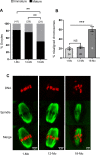

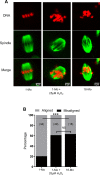

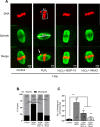
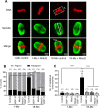
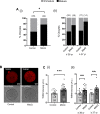

Similar articles
-
The Role of Mitochondria in Oocyte Maturation.Cells. 2021 Sep 19;10(9):2484. doi: 10.3390/cells10092484. Cells. 2021. PMID: 34572133 Free PMC article. Review.
-
l-carnitine supplementation during vitrification of mouse germinal vesicle stage-oocytes and their subsequent in vitro maturation improves meiotic spindle configuration and mitochondrial distribution in metaphase II oocytes.Hum Reprod. 2014 Oct 10;29(10):2256-68. doi: 10.1093/humrep/deu201. Epub 2014 Aug 11. Hum Reprod. 2014. PMID: 25113843
-
Human cumulus-enclosed germinal vesicle oocytes from early antral follicles reveal heterogeneous cellular and molecular features associated with in vitro maturation capacity.Hum Reprod. 2015 Jun;30(6):1396-409. doi: 10.1093/humrep/dev083. Epub 2015 Apr 22. Hum Reprod. 2015. PMID: 25904637
-
Improved cryotolerance and developmental potential of in vitro and in vivo matured mouse oocytes by supplementing with a glutathione donor prior to vitrification.Mol Hum Reprod. 2016 Dec;22(12):867-881. doi: 10.1093/molehr/gaw059. Epub 2016 Sep 7. Mol Hum Reprod. 2016. PMID: 27604460
-
Aging and oocyte competence: A molecular cell perspective.WIREs Mech Dis. 2023 Sep-Oct;15(5):e1613. doi: 10.1002/wsbm.1613. Epub 2023 May 29. WIREs Mech Dis. 2023. PMID: 37248206 Review.
Cited by
-
The Role of Mitochondria in Oocyte Maturation.Cells. 2021 Sep 19;10(9):2484. doi: 10.3390/cells10092484. Cells. 2021. PMID: 34572133 Free PMC article. Review.
-
Human Umbilical Cord Mesenchymal Stem Cells Derived Exosomes Improved The Aged Mouse IVM Oocytes Quality.Reprod Sci. 2024 Sep;31(9):2808-2819. doi: 10.1007/s43032-024-01566-z. Epub 2024 Apr 30. Reprod Sci. 2024. PMID: 38689080
-
Addition of granulocyte macrophage colony stimulating factor (GM-CSF) during in vitro oocyte maturation improves embryo development in a mouse model of advanced maternal age.J Reprod Dev. 2024 Dec 13;70(6):411-417. doi: 10.1262/jrd.2024-066. Epub 2024 Nov 9. J Reprod Dev. 2024. PMID: 39522961 Free PMC article.
-
Antioxidant supplementation may effect DNA methylation patterns, apoptosis, and ROS levels in developing mouse embryos.Histochem Cell Biol. 2024 Sep;162(3):215-224. doi: 10.1007/s00418-024-02286-w. Epub 2024 Apr 17. Histochem Cell Biol. 2024. PMID: 38627305 Free PMC article.
-
Endurance exercise-induced histone methylation modification involved in skeletal muscle fiber type transition and mitochondrial biogenesis.Sci Rep. 2024 Sep 10;14(1):21154. doi: 10.1038/s41598-024-72088-6. Sci Rep. 2024. PMID: 39256490 Free PMC article.
References
-
- Angell RR. Aneuploidy in older women. Higher rates of aneuploidy in oocytes from older women. Hum Reprod 1994;9:1199–1200. - PubMed
-
- Baird DT, Collins J, Egozcue J, Evers LH, Gianaroli L, Leridon H, Sunde A, Templeton A, Van Steirteghem A, Cohen J. et al.; ESHRE Capri Workshop Group. Fertility and ageing. Hum Reprod Update 2005;11:261–276. - PubMed
Publication types
MeSH terms
Substances
LinkOut - more resources
Full Text Sources
Research Materials
Miscellaneous

